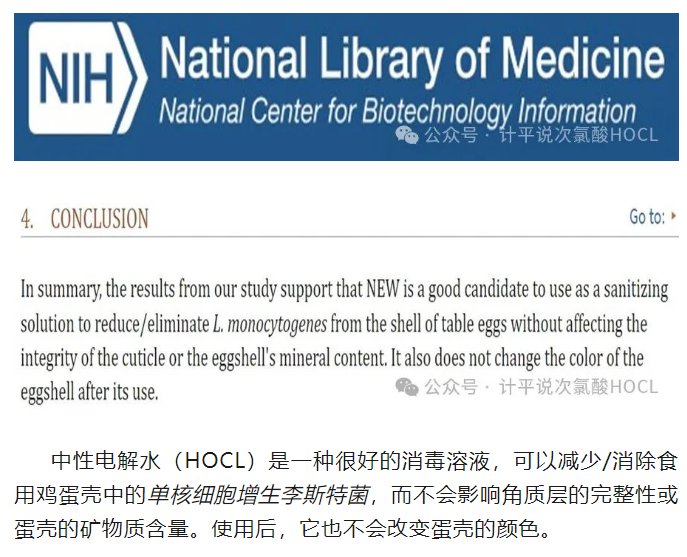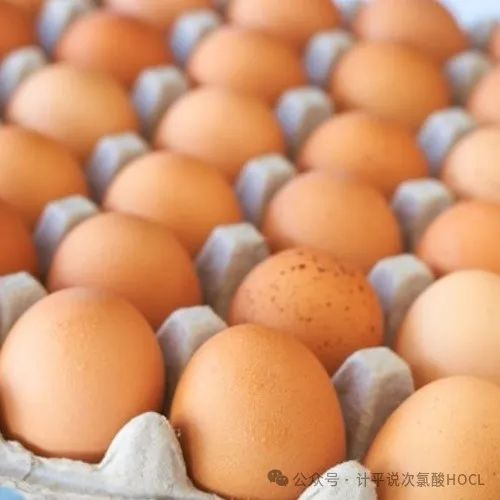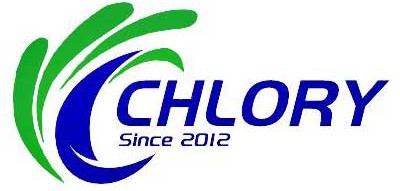The use of hypochlorous acid to clean and disinfect table eggs is a proven technology to reduce consumer exposure to foodborne pathogens.


Neutral Electrolyzed Water (HOCL) is a great disinfecting solution to reduce/eliminate Listeria monocytogenes in edible eggshells without affecting the integrity of the cuticle or the mineral content of the eggshell. It also does not change the color of the eggshell after use.
The usage standard shows that hypochlorous acid is a new safe and environmentally friendly disinfectant for eggs, with a concentration of 150 mg/L ACC, a spraying volume of 0.5 mL/egg, and a disinfection time of 180 s.
Electrolyzed hypochlorous acid water can safely and effectively keep eggshells sanitary and prevent the growth of E. coli, Salmonella and Listeria.
1. Chemical properties and bactericidal mechanism of hypochlorous acid
Physicochemical properties
Hypochlorous acid (HOCl) is a colorless aqueous solution with a molecular weight of 52.46 g/mol. At pH 5-6, it is mainly in the molecular state (HOCl), and its bactericidal efficiency is 80-150 times higher than that of the ionic state (OCl⁻).
It is most stable in an acidic environment (pH 5-6). It is converted into hypochlorite when pH>7 and easily decomposes into chlorine gas (Cl₂) when pH<5, reducing its effectiveness.
Sterilization mechanism
Penetration and oxidative damage: HOCl molecules are small and uncharged, and can penetrate the bacterial/viral cell walls, oxidatively destroying proteins, nucleic acids and enzyme systems.
New ecological oxygen (O) assistance: The reactive oxygen species produced during decomposition further denature pathogen proteins.
Broad spectrum: The inactivation rate of Salmonella (a common pathogen in eggs) and Escherichia coli is >99.3%.
2. Necessity of egg washing and industry pain points
Purpose of cleaning
Remove organic matter such as feces and feathers from the surface of eggshells to reduce the risk of Salmonella contamination.
Extend shelf life and meet food safety standards.
Limitations of Traditional Methods
Cold water cleaning is inefficient, and hot water (>45°C) can easily shrink the eggshell membrane and lead to bacterial penetration.
Chemical disinfectants (such as sodium hypochlorite) have high residuals, require large amounts of flushing, and high concentrations (>200ppm) may corrode equipment.
3. Practical application of hypochlorous acid in egg cleaning
Operation process and technical parameters
|
step |
Require |
|
Pre-cleaning |
Rinse with warm water at 40-45℃ for 30 seconds to remove surface dirt |
|
HOCl disinfection |
Concentration 10-60ppm, spray or soak for 10 minutes |
|
Post-processing |
Rinse with running water for 10 minutes or dry with hot air (to avoid residue) |
|
Storage |
Refrigerate (below 4°C) with the pores facing downwards. |
Industrial application cases
Atomization technology: Use a 5-20μm particle size atomizer and spray 10ppm HOCl at a distance of 3m, which can reduce the total bacterial count on the eggshell by 98% and improve the hatchability.
Automated production line: Fully automatic module integrated with HOCl spray, replacing traditional formaldehyde disinfection.
4. Safety and Residue Control
Biosafety
- HOCl is a natural substance in the human immune system and has no irritation to the skin and mucous membranes at concentrations below 50ppm.
- The decomposition products are water and sodium chloride, with no toxic by-products.
Residue Control Requirements
- US FDA: After cleaning, it takes 10 minutes to dry or rinse with drinking water, and the residual chlorine is ≤60ppm.
- Ministry of Health, Labor and Welfare of Japan: No need to rinse below 30ppm.
- Chinese regulations: Egg applications are not specified, but GB 28234-2020 allows slightly acidic electrolyzed water to be used for food utensils disinfection.
5. International regulations and compliance requirements
|
Country |
Regulatory documents |
Key Requirements |
|
USA |
FDA FCN 1811 |
Allow ≤60ppm HOCl for washing eggs, then dry/rinse |
|
|
EPA Standards |
Food contact surface disinfectant ≤ 200ppm total chlorine |
|
Japan |
Food Additive Certification |
HOCl is a legal food additive, no need to rinse below 30ppm |
|
European Union |
(EU) 2021/365 |
Approval of active chlorine for use in biocidal products (Type 1) |
|
China |
GB 28234-2020 |
Only acidic electrolyzed water is approved for instrument disinfection |
|
Note: China has not yet clarified the direct regulations on HOCl in egg washing, and it needs to refer to the equipment standards for implementation. |
||
6. Technological advantages and industry value
Core Advantages
-
High efficiency and low concentration: 10-50ppm HOCl is equivalent to 200-500ppm sodium hypochlorite.
-
Extend shelf life: Inhibit the reproduction of eggshell microorganisms and extend the refrigerated shelf life by 20%.
-
Environmental protection: Chloride in wastewater is degraded within 48 hours and has little impact on aquatic life.
Economical
Chlory's equipment electrolyzes brine to produce HOCl at a lower cost than commercial disinfectants, and the equipment can be integrated into existing production lines.
Hypochlorous acid (HOCl) has become an ideal disinfectant for egg washing due to its high efficiency in sterilization and low residue, especially suitable for large-scale farms.
- Strict concentration control: Industrial line recommends 10-60ppm, pH 5.5-6.5.
- Post-treatment necessity: Even for rinse-free products (such as Japan), light rinsing is recommended to eliminate the chlorine smell.
- Compliance first: Exporting companies should give priority to following FDA/EPA standards, and domestic companies can refer to GB 28234-2020 to explore applications.
Summarize
Hypochlorous acid water is not only safe and natural, but also more effective than the chemicals currently used.
- 100 times more effective in killing bacteria than chlorine bleach;
- Effective against both Gram+ and Gram- bacteria;
- Effective against spore-forming bacteria;
- Effective against E. coli O157:H7, Salmonella, and Listeria;
- Effective against Cryptosporidium and Giardia which contaminate water;
- Avoid high temperatures;
- The most effective temperature is 10-30 ºC;
- Does not cause irritation, safe for eyes and skin;
- No protective gear required.
Contact:
Phone/WA/WeChat: +86 157 8668 8998
Email: [email protected]
